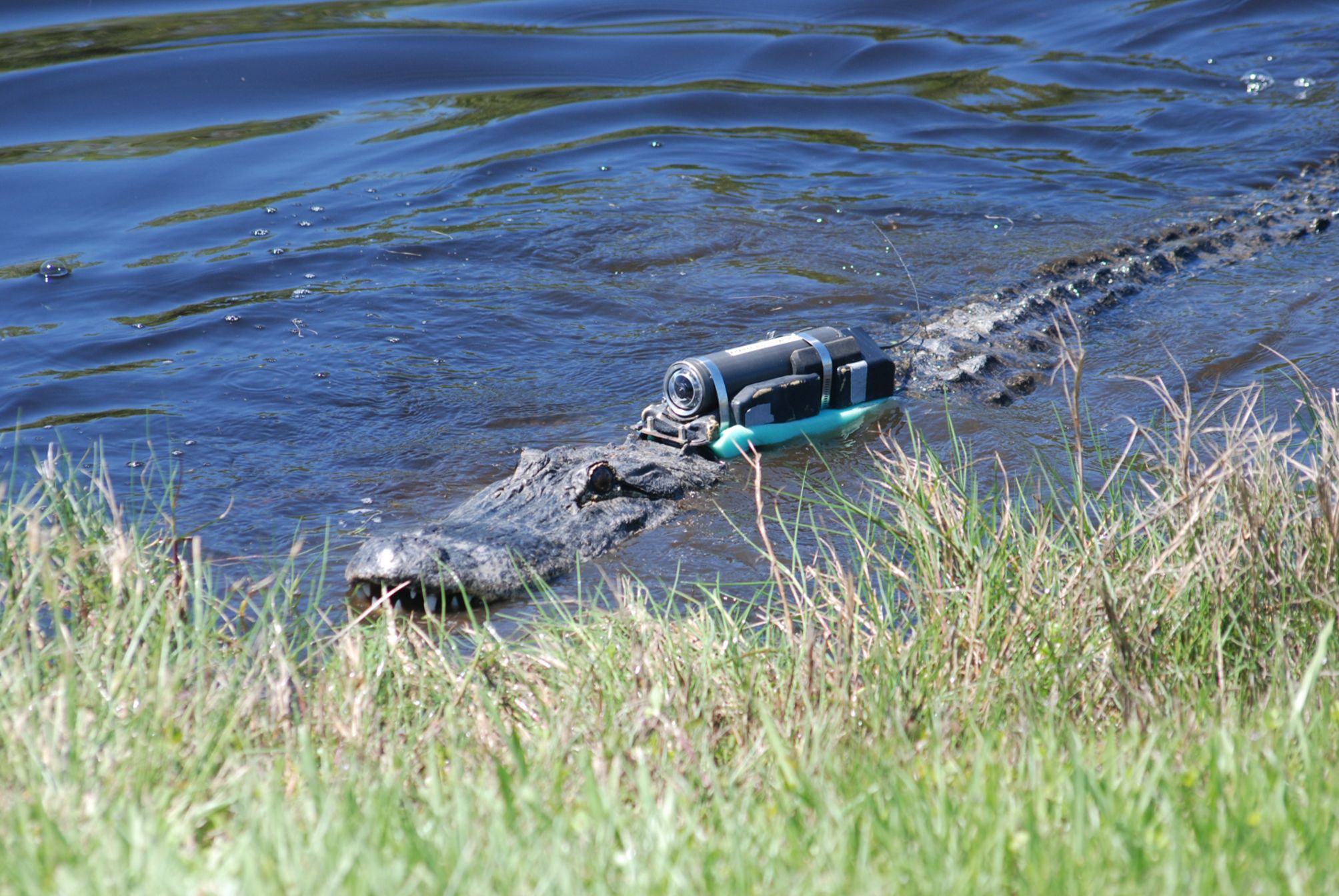Alligators Stalk, Crush & Swallow Prey on Candid Camera

Chomp, chomp. An inconspicuous — albeit with a camera on its back — alligator slithers through a lake stalking and capturing nearby prey, then surfaces to crush and swallow it.
This gator is one of a group of camera-toting American alligators that are revealing some surprising insights about their foraging behaviors in two coastal regions in Florida, scientists report in a new study.
The resulting video footage revealed that the cryptic predators hunt most often at night, even though the probability of a successful catch is highest during the morning hours. [See Video of the Alligators Stalking Prey]
"We discovered that alligators forage at all times of the day, but increasingly during the night and evening hours, however they were most successful in the morning and while attacking prey below the surface," said the researchers, James Nifong from the University of Florida and colleagues, in a statement.
In the past, scientists have relied on stomach contents of alligators, direct observations of captured animals or indirect methods such as calculating metabolic needs of the animal to understand their preying behavior and the potential impact they have on their surrounding ecosystem.
But these methods may not produce accurate predictions, or answer all questions regarding alligators' daily lives, the researchers said. That's why the researchers turned to the National Geographic Society's Crittercams, which have piggybacked on more than 60 species, including penguins and jumbo squids, to capture their daily activities.
In the new study, the researchers attached these cameras onto 15 adult alligators from Merritt Island National Wildlife Refuge and Guana River in coastal Florida. The alligators were detained for about 20 minutes while the cameras were being attached, and were then released to the wild.
Sign up for the Live Science daily newsletter now
Get the world’s most fascinating discoveries delivered straight to your inbox.
The scientists then retrieved the video footage recorded over the following hours to determine how frequently the animals attempted to capture prey, and how successful they were in their hunts.
The results showed that the alligators were successful at hunting prey about 50 percent of the time; of the 59 prey attacks recorded on camera, 31 resulted in capturing the prey. The researchers also observed that the animals would try to attack a prey up to four times in an hour. During a "feeding frenzy," one alligator made 18 attacks in just one hour, the researchers said.
The researchers knew an alligator was attacking a prey when the animal made a head-strike or jaw-snap move. An attack was considered successful if it was followed by the animal's chewing and swallowing. The researchers estimated that on average, American alligators successfully consumed one prey, or group of small prey species, every four hours.
The footage also revealed that the animals were twice as successful at capturing prey when they were submerged, but they often came to the surface to eat the prey.
"If submerged at the time of prey capture, alligators often surfaced to immobilize, crush, reposition, and swallow captured prey," the researchers write in their study, which is detailed today (Jan. 15) in the journal PLOS ONE.
Email Bahar Gholipour. Follow us @LiveScience, Facebook & Google+. Original article on LiveScience.











